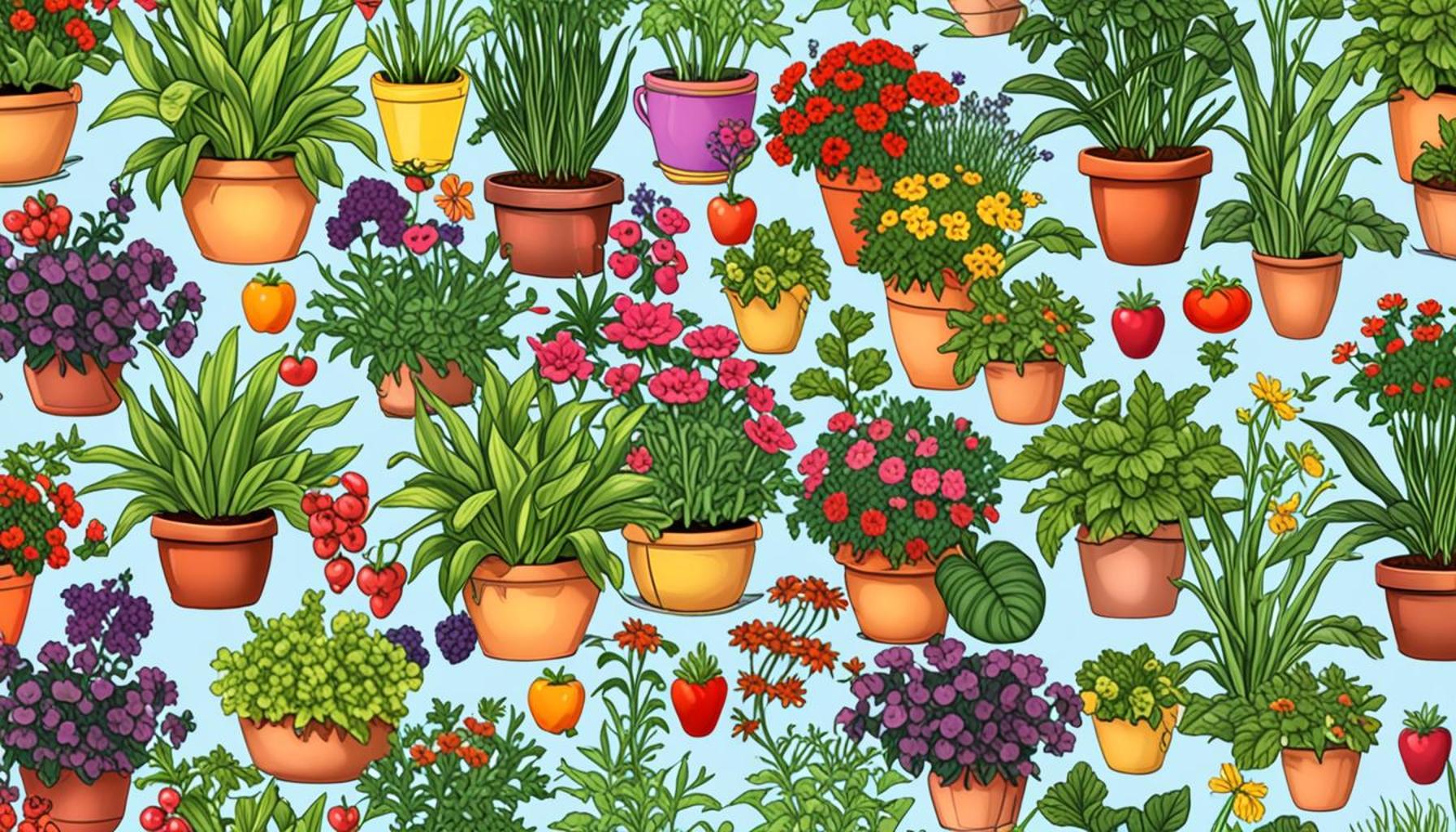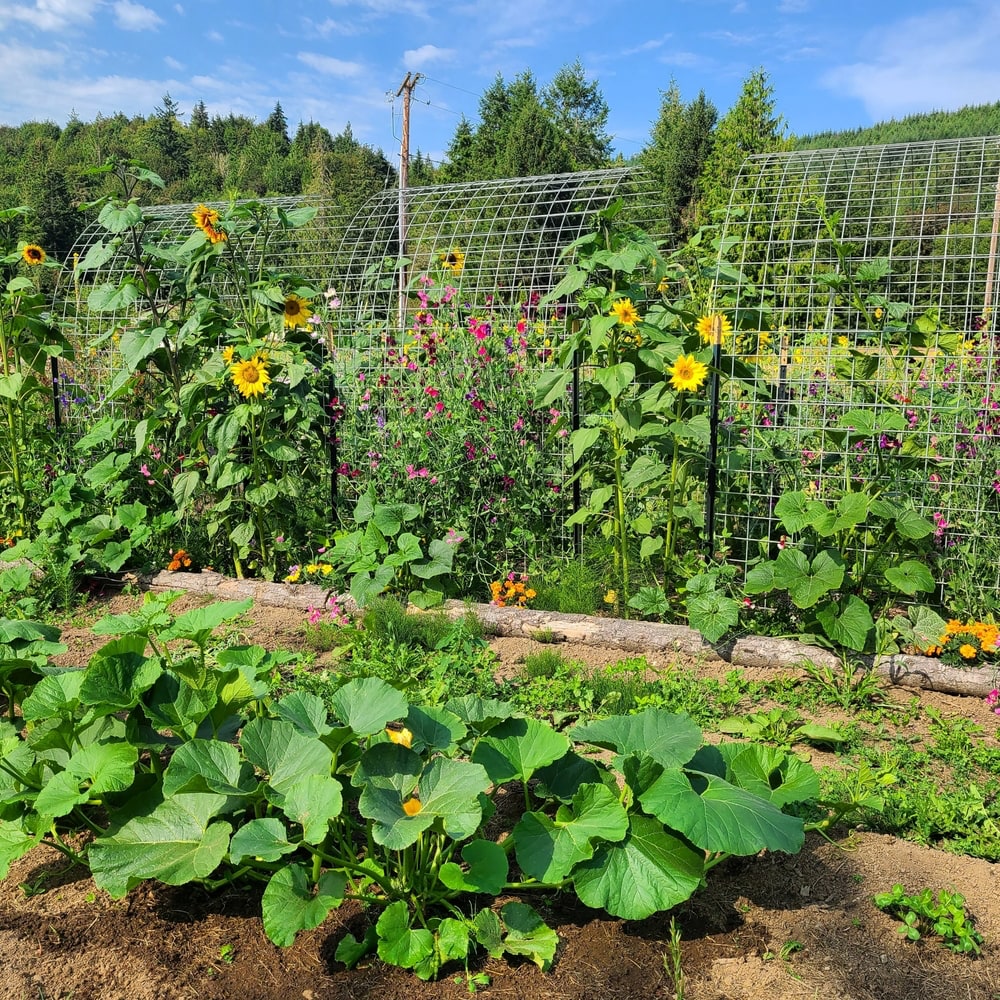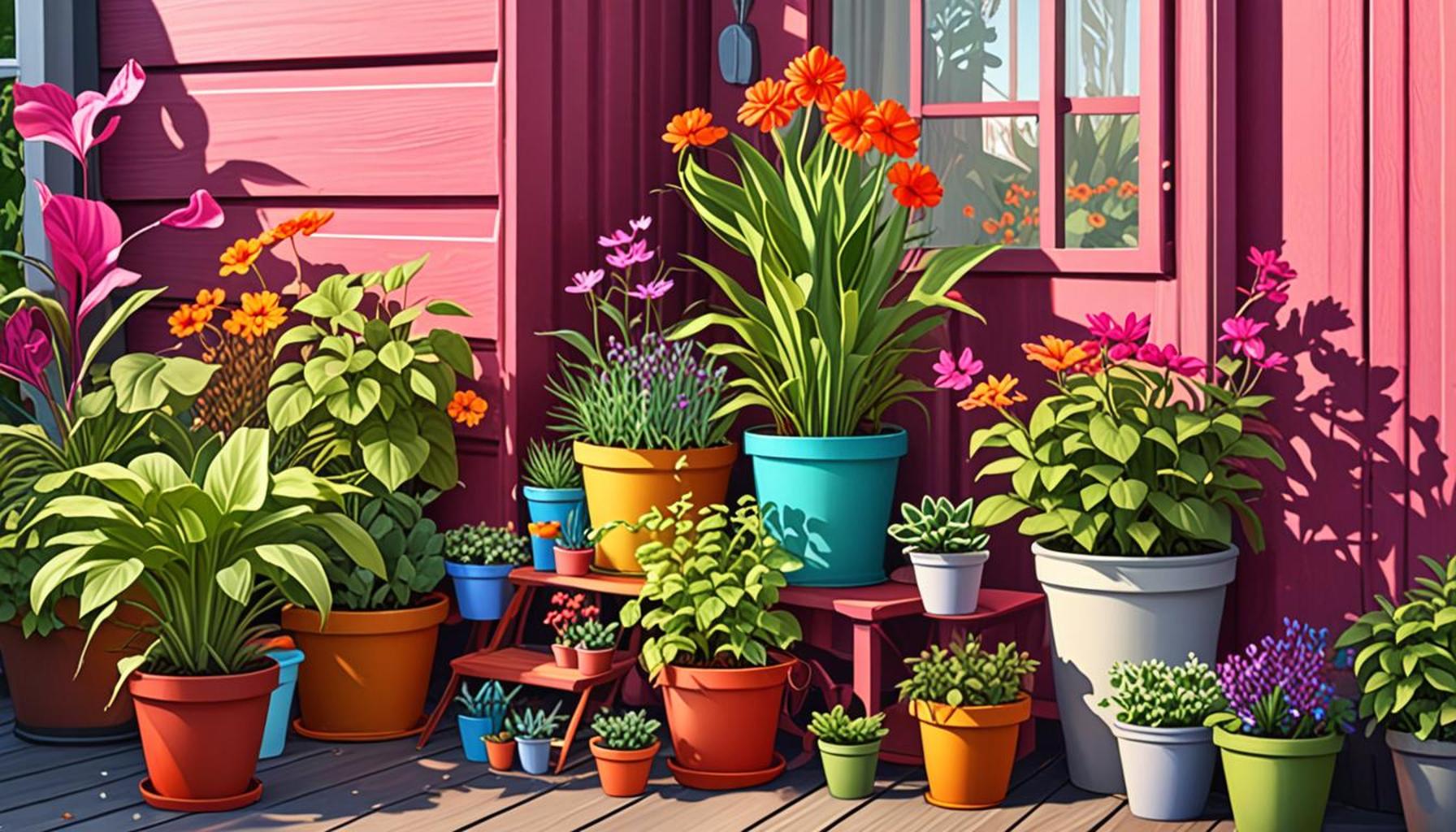Companion Planting: Choosing Plants that Boost Growth and Flavor in Your Home Garden

Understanding the Benefits of Companion Planting
Companion planting is a gardening method that has been practiced for centuries, rooted in tradition and time-tested techniques. The idea behind this practice is simple yet effective: by pairing certain plants together, you can create a thriving garden ecosystem that not only boosts plant growth but also helps control pests, enriches soil health, and enhances the flavors of your produce. As we dive deeper into the benefits of companion planting, it becomes clear that this method offers a sustainable approach to gardening that aligns well with modern ecological principles.
Why Consider Companion Planting?
- Boosts Growth: Certain plant combinations can lead to improved growth rates and yields. For example, corn, beans, and squash—often referred to as the “Three Sisters” by Native American cultures—are planted together as they provide mutual benefits. Corn serves as a natural stake for beans to climb, while the beans fix nitrogen in the soil, enriching it for the squash, which spreads out and helps suppress weeds.
- Deters Pests: Many companion plants exhibit pest-repelling properties. For instance, the aromatic scent of basil is known to repel flies and mosquitoes, making it a perfect companion for tomatoes. Additionally, planting garlic near roses can deter aphids, a common pest that can damage these beautiful flowers, reducing the need for chemical pesticides.
- Improves Flavor: The right plant pairings can significantly enhance the flavor of vegetables and herbs. The ancient practice of planting sage near cabbage is a prime example; sage not only adds a depth of flavor to dishes when used with cabbage, but it also masks the scent of the cabbage, helping to deter cabbage moths.
By delving into specific plant pairings, you can enhance your garden’s vitality and productivity. For instance, the vibrant marigold is not just a decorative flower; it can repel nematodes and certain beetles, making it a valuable addition to vegetable gardens. Meanwhile, interplanting flowers such as nasturtiums with leafy greens can attract beneficial insects like ladybugs, which prey on aphids and other garden pests.
Explore Unique Plant Partnerships
The world of companion planting is as rich and varied as the gardens it creates. As you embark on your journey into this fascinating practice, consider experimenting with different plant combinations. The resulting environmental balance can lead to richer soil, healthier plants, and a more abundant harvest.
Imagine incorporating culinary herbs like thyme and rosemary alongside your vegetables; not only do they thrive together, but their fragrances can attract pollinators and beneficial insects, creating a more dynamic garden ecosystem. Furthermore, indigenous practices often emphasize the use of native plants in companion planting, which supports local wildlife and promotes biodiversity as part of sustainable gardening efforts.
In conclusion, companion planting is more than just a gardening technique; it is an art that can turn your home garden into a vibrant network of symbiotic relationships. By carefully selecting your plant partnerships, you’ll cultivate not only a flourishing garden but also a deeper understanding of the interconnectedness of nature, making your gardening experience infinitely rewarding.

DISCOVER MORE: Click here for tips on low-water plants
Finding the Perfect Pairings
When it comes to companion planting, the magic often lies in understanding how plants can work together to enhance each other’s growth and resilience. This practice not only increases your garden’s productivity but also fosters biodiversity, which is crucial in maintaining a healthy ecosystem. Each pairing has unique characteristics that contribute to a harmonious garden environment.
Key Factors to Consider
Before diving into specific pairings, there are essential factors to consider to maximize the advantages of companion planting:
- Light Requirements: Different plants have varying light needs. For instance, sun-loving tomatoes thrive in direct sunlight, while leafy greens like spinach can benefit from partial shade. Grouping plants with similar light requirements ensures that all have the opportunity to absorb the necessary sunlight without overshadowing each other.
- Soil Preferences: Some plants excel in well-drained soil, while others prefer rich, loamy conditions. For example, carrots and radishes are root vegetables that do well in loose, sandy soil, whereas peas thrive in somewhat heavier, more nutrient-rich soil. Ensuring that companion plants have compatible soil preferences helps promote robust root systems and overall strong growth.
- Growth Habits: Take note of how the plants grow—whether they are tall, bushy, or sprawling. Tall plants like corn can provide shade for shorter plants such as lettuce, creating a microclimate beneficial for both. Similarly, planting quick-growing crops next to slower-growing ones can maximize the use of space and resources.
- Pest Management: Selecting plants that can repel pests or attract beneficial insects is a key strategy in natural pest control. For instance, planting dill near cabbage can help to draw in ladybugs, which feed on aphids, while the strong aroma of mint can deter pests from disturbing vulnerable plants.
As you explore these factors, consider combining flowers with your vegetables. Marigolds, for instance, can repel harmful nematodes and attract pollinators at the same time. Meanwhile, flowering herbs such as yarrow and dill not only add beauty but also attract beneficial insects that enhance pollination and reduce pest populations.
The Research and Evidence Behind Companion Planting
Companion planting is supported by a growing body of research that underscores its benefits. Studies have shown that certain plant pairings can significantly affect crop productivity and resilience. For example, research has demonstrated that beans and corn can achieve greater yields when planted together compared to when they are grown alone. Additionally, some garden enthusiasts have reported that tomatoes grown alongside basil boast improved flavor, likely due to the unique interaction between these two plants.
Furthermore, the practice of companion planting aligns with organic gardening principles, allowing gardeners to minimize the use of herbicides and pesticides while promoting a healthier ecosystem. By planting with a purpose, your home garden can become a flourishing, sustainable source of not just food, but also knowledge and appreciation for the intricate web of life that supports it.
| Companion Planting Benefits | Enhanced Gardening Outcome |
|---|---|
| Pest Control | Certain plants deter pests, reducing the need for chemical pesticides. |
| Soil Improvement | Plants like legumes enhance soil nutrients, benefiting neighboring plants. |
| Flavor Enhancement | Companion plants can enhance the flavor profile of primary crops. |
| Diverse Harvests | Varied plant interactions lead to rich, abundant harvests. |
Companion planting involves strategic planting choices that optimize growth and improve flavor. This method not only benefits the plants themselves but also aids in creating a more sustainable garden. Understanding the dynamics of plant relationships allows gardeners to foster an ecosystem where each species supports others. For instance, pairing tomatoes with basil does not just protect tomatoes from aphids but also enhances their flavor, creating a win-win situation. Moreover, employing plants that attract pollinators can significantly contribute to the reproductive success of flowering plants, leading to more bountiful yields. As you delve into the fascinating world of companion planting, you will discover the profound impacts these plant partnerships can have on your garden delight. Prepare to explore practical combinations that will not only beautify your garden but also yield delectable produce.
DISCOVER MORE: Click here to uncover easy-to-grow edible plants!
Successful Plant Pairings to Explore
Implementing companion planting effectively involves selecting the right combinations that not only enhance growth but contribute to richer flavors and healthier plants. Below are some noteworthy pairings that can elevate your home garden experience.
Classic Combinations
The traditional pairing of tomatoes and basil is beloved by both gardeners and chefs alike. Tomatoes thrive when planted alongside basil due to their ability to deter pests such as hornworms while benefiting from basil’s natural growth-enhancing properties. Studies have shown that tomatoes grown near basil can have a heightened flavor profile, making this duo a must-try in any home garden.
Another fantastic pairing is the relationship between carrots and onions. Onions release sulfur compounds that can help ward off aphids and carrot flies, pests notorious for damaging carrots. This synergy not only boosts yield but also utilizes space effectively, as both plants grow well together in the same bed.
Legumes as Soil Enrichers
Legumes such as beans and peas are not just companion plants; they are beneficial for the soil as well. Their ability to fix nitrogen enriches the surrounding soil, promoting the growth of neighboring plants. Pairing them with heavy feeders like corn and tomatoes can lead to astonishing growth, allowing less nutrient-rich soil to thrive.
Food and Flower Pairings
Integrating flowers into your vegetable garden can have tremendous benefits. Nasturtiums, for instance, act as a trap crop for aphids, diverting them from more vulnerable crops like cucumbers and zucchini. Furthermore, their vibrant blooms not only enhance visual appeal but can also be utilized in salads, making them a dual-purpose winner.
In addition to nasturtiums, the fragrant hollyhocks can attract beneficial insects such as pollinators and predatory wasps. Their presence enhances the overall health of your garden ecosystem while providing a stunning visual spectacle during the bloom season.
Seasonal Considerations
Timing is another crucial factor in companion planting. Understanding your growing season can make a significant difference in securing successful pairings. For instance, planting cucumbers next to radishes can benefit from the radishes’ quick growth and ability to break up the soil bed for the slower-growing cucumbers that follow. This intercropping technique maximizes yield and efficiency, providing a continuous harvest throughout the growing months.
Additionally, consider incorporating cover crops like clover during off-seasons. These not only fix nitrogen in the soil but also serve as living mulch, suppressing weeds and maintaining soil health until you’re ready to plant your next seasonal crops.
As you delve deeper into the practice of companion planting, take the time to experiment with different pairings based on your climate and soil conditions. Each pairing has the potential to yield exciting surprises, enhancing not just your garden’s output, but also its flavor, diversity, and overall health.
DISCOVER MORE: Click here to dive deeper
Conclusion: Unlocking the Secrets of Companion Planting
As we’ve explored, companion planting is much more than a gardening trend—it’s a strategic approach that taps into the natural synergies between plants. By carefully selecting pairings, you can foster an environment that not only enhances growth but can significantly amplify the flavor of your harvest. The classic alliances like tomatoes and basil, the enriching potential of legumes, and the visual and ecological benefits of adding flowers like nasturtiums offer diverse benefits that stretch beyond mere aesthetics.
Consider the lessons learned about the importance of timing and seasonal considerations. These insights can drastically improve the success of your gardening endeavors, leading to a more productive and flavorful home garden. Every garden is unique, influenced by climate, soil quality, and personal taste. This means the world of companion planting is not only expansive but also an ongoing experiment waiting for you to explore.
As you get your hands dirty and delve into these combinations, don’t hesitate to keep a journal of your findings. Observe how different plants interact and thrive, and share your discoveries with fellow gardening enthusiasts. With one successful pairing at a time, you’ll create a flourishing ecosystem that enriches your kitchen and brings joy to every growing season. Embrace the journey of companion planting and unlock the full potential of your home garden for a truly rewarding experience.



